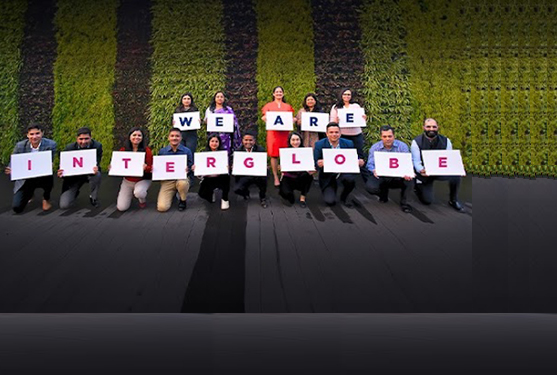

Sustainability in the logistics industry - A perspective
The sheer size and scope of the logistics sector demands that it becomes as sustainable possible because not only would such a transition reduce emissions considerably, it would make the sector more profitable and create a more harmonious workforce.
Climate change is accelerating and wreaking havoc across the planet. Emissions produced by countless automobiles, trucks, two-wheelers, airplanes, boats, ships, trains, factories, farms, data centres, and other gas spewing modern inventions are trapping heat and raising the planet’s temperature to dangerous and catastrophic levels.
Consequently, over the past few years, Environmental Social and Governance (ESG) goals have climbed high on the agenda of every organisation. In line with these goals, organisations are transitioning to make themselves more sustainable. This entails not only lowering emissions but also creating more diverse and equitable workplaces and becoming aligned with governance policies centred around sustainability.
The global logistics industry - which is responsible for producing approximately 8% of global greenhouse gas emissions - has already taken many steps to lower its emissions.
How logistics companies are becoming sustainable
The logistics industry is the bedrock of global commerce. It facilitates the movement of goods across the globe, and in 2021, its size was a whopping USD 9.52 trillion. The supply chain along which goods are transported has two facets, the physical supply chain, and the digital supply chain. Cargo is transported and stored along the physical supply chain before reaching its destination. The digital supply chain pertains to the storage and movement of digital documentation through platforms and digital tools. Such storage and movement are required for bookings, permits, rescheduling, tracking, and monitoring.
Making the physical supply chain greener entails using green fuels such as biofuels, electric vehicles, and renewable energy such as solar power. While these energy sources as well as electric vehicles are a long way from being ubiquitously used in physical supply chains, modern technologies like automation, machine learning, blockchain, GPS tracking, integrated logistics, and remote digital access solutions are already making the digital supply chain more and more sustainable.
For instance, the global shipping industry – which emits 3% of global emissions – is using these technologies to gain real-time data on engine and route efficiency. This is helping reduce carbon emissions and improve shipment speed. The industry is also using some of these technologies to reduce spoilage and waste by monitoring chemical levels and temperatures of shipments. Also, as customers increasingly demand carbon accounting with invoices, shipping companies are providing customers with precise information about every container’s CO2 emission using these technologies.
A huge benefit of using digital technologies in supply chains is that such tools generate vast quantities of valuable data. This gives businesses easy access to sustainability metrics, helps them measure their impact on sustainability, and report information more accurately. The benefits of more efficient logistics networks percolate across an economy. As logistics networks become more efficient, not only does the logistics industry’s carbon footprint fall but the price of goods transported along such networks falls as well. That’s why - with the rollout of the National Logistics Policy (NLP) - the Indian Government has set its sights on making the logistics sector more efficient. The government expects to lower the logistics sector’s share in India’s GDP from 14% to single digits. Digitisation of supply chains is crucial to realising this aim.
Sustainability in logistics: challenges and solutions
Though biofuels, electric vehicles, and renewable energy sources are now mainstream, petroleum still comprises over 90% of the fuel used by the transportation sector. Currently, the infrastructure undergirding sustainable logistics is underdeveloped, especially when compared to the infrastructure for conventional fuels. Consequently, the cost of using biofuels is significantly greater than the cost of using fossil fuels.
On the digital supply chain front – particularly in India - there is an absence of a database that can map moved goods. This hinders the creation of data-based policymaking. Also, existing digital solutions in India are yet to provide end-to-end visibility. Other challenges include the absence of a policy aimed at improving the skills of workers in the logistics sector.
However, the government has introduced digital solutions aimed at remedying some of these challenges. Consider that recently introduced digital solutions like ICEGATE and E-logs reduce inefficiency, increase transparency, and the speed at which goods are shipped. Other sustainable solutions are also being built into digital supply chains. With green and reverse logistics becoming part of the circular economy, less waste than ever is being produced along supply chains and materials are being used more judiciously. Returns management apps are making managing returns easy, efficient, and cost-effective, thereby eliminating waste. And automated inventory solutions are optimising inventory management. This is not only reducing waste but also lowering costs.
Also, India’s logistics and shipping sectors are now aligned with both global and domestic sustainability practises. The sector is conforming to global benchmarks, including the Energy Efficiency Existing Ship Index, the Emissions Trading System, and the Carbon Intensity Rating. Furthermore, new green supply chain laws are making it necessary for companies to prioritise sustainability in logistics operations. As the adoption of green supply chains increases, the cost of shipping along them will fall.
While making supply chains greener will undoubtedly benefit the environment, ethics are not the primary reason for such a transition. There are strong economic imperatives at play. For instance, unless current business practises are adjusted, there could be an 8 billion tonne gap between the supply and demand of natural resources by 2030. In economic terms, the loss by 2030 could be as high as USD 4.5 trillion. New digital technologies will continue to play a major role in making supply chains more efficient and therefore more profitable. Already, customer-facing businesses at the end of a supply chain are using such technologies to become more sustainable and profitable.
Sustainability at the customers’ end
Customers often complain that a delivery person seems to arrive right after they’ve stepped outside their home. As a result, the delivery person must make more than one trip to a home, which increases a logistics provider's carbon footprint and cost. To reach customers when they’re sure to be home, some businesses offer customers a live-tracking feature. With this feature, customers may change a parcel’s delivery time until an hour before delivery. As a result, deliveries are made on the first trip.
ESG’s Social and Governance aspects
In addition to meeting ESG goals by improving physical and digital supply chains, logistics firms are also meeting such goals by making their workforce more diverse. That’s because diversity fosters innovation. With a diverse workforce, innovative ideas are more likely to emerge. Such ideas help examine old problems with a fresh gaze. As a result, the likelihood of solving seemingly intractable problems increases. Hence, logistics firms are recruiting more women and those from minority backgrounds. In addition, such firms are paying greater attention to the well-being of employees – including to their mental health. Furthermore, they’re making workplaces more inclusive and equitable such that everyone’s voice is heard, and everyone feels valued.
On the governance front, there is a paradigm shift underway as well. There is more diversity than ever before in logistics firms' leadership teams. Also, the pre-pandemic mantra of “profit before all” is being tempered with greater concern for all stakeholders, including employees.
The global logistics industry's size is already several times that of major world economies – including the Indian economy. And by 2028, the industry’s size is expected to expand to USD 14.3 trillion. The sheer size and scope of this sector demand that it become as sustainable as possible because not only would such a transition reduce emissions considerably, but perhaps more importantly, it would make the sector more profitable and create a more harmonious workforce.

to portrait mode for better viewing








